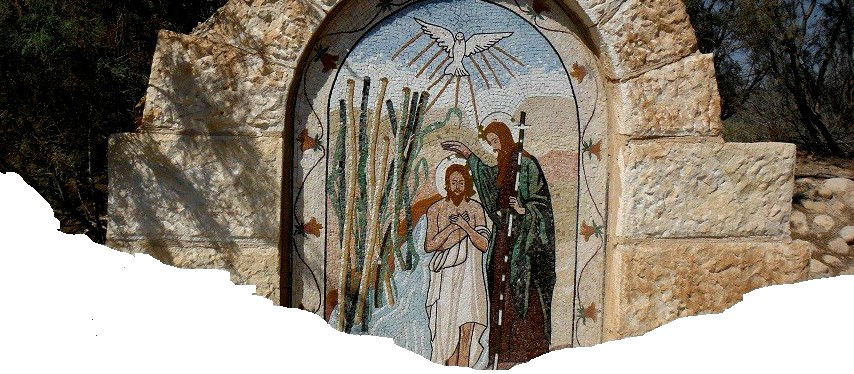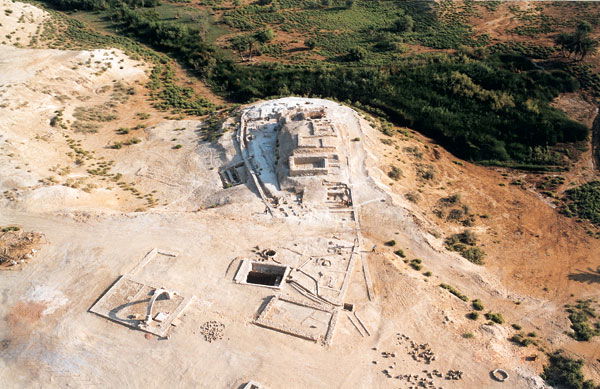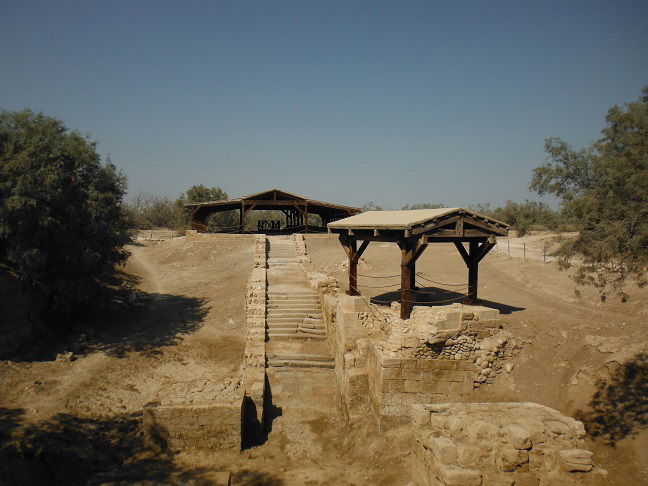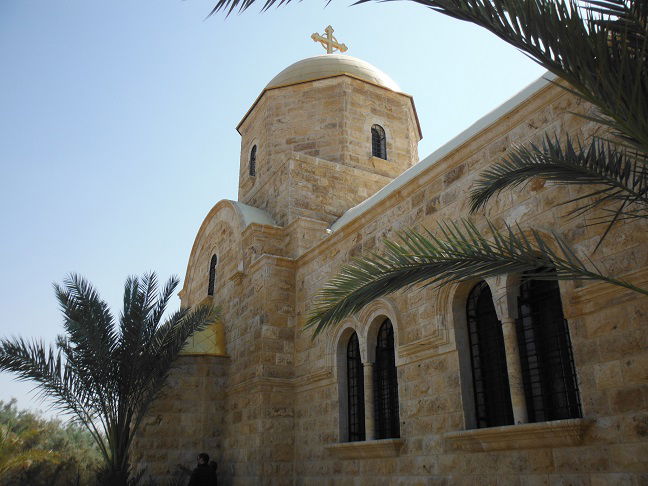
The site of " Bethany Beyond the Jordan " was discovered in 1996. Nowadays it is officially recognized as the place where John the Baptist lived and baptized Jesus.
The site is very extensive as it is not limited to the existing banks of the Jordan River. John the Baptist lived in a cave in Wadi Kharrar, a valley formed by the spring flow descending to the Jordan River. The first monasteries were built on a small hill close to that source. Archaeologists have discovered churches, inns, and fonts supplied by this body of water. Further, the cave in which John the Baptist probably lived has been transformed into a church. This part of the site is open to the public upon special request only.

In a lower area of the site, toward the Jordan River, archaeologists have cleared the ruins of a church dating from the 5th century. This small edifice stands on previous foundations possibly laid by witnesses of Jesus' time or their descendants. At that time, the structure was probably located on the river bank, with a flight of stairs leading down to the water, in order to allow worshipers to be baptized. Jordan River has since then changed its course westwards, so that we have to wander a bit further for reaching the existing shorelines.

Pilgrimages to Bethany were common until the 14th century. They discontinued when the Crusaders' influence disappeared under Muslim dominance. Nowadays, the Jordanian government provided plots of land to religious communities in order they can build religious places of worship. Hence we can find in the area several modern churches and a monastery.
